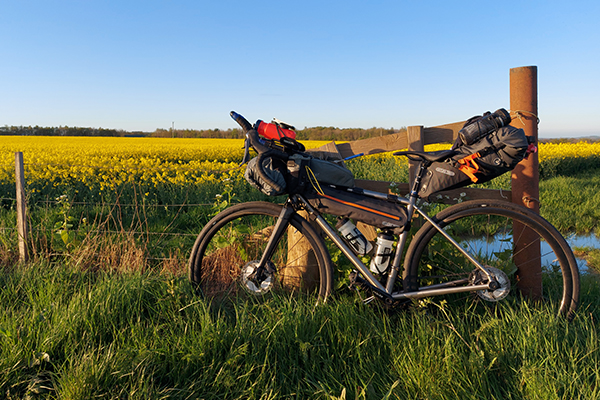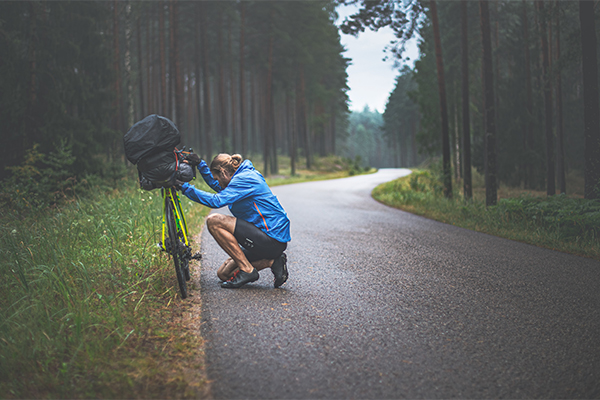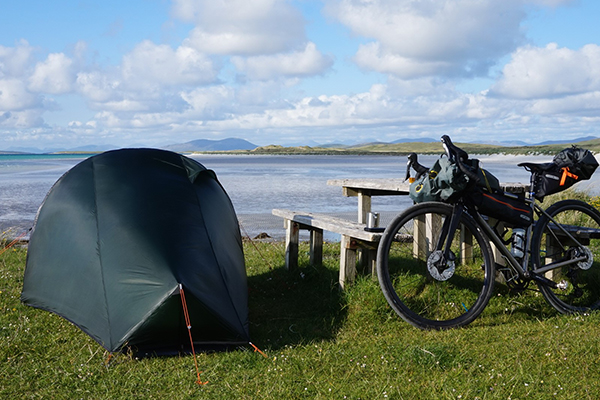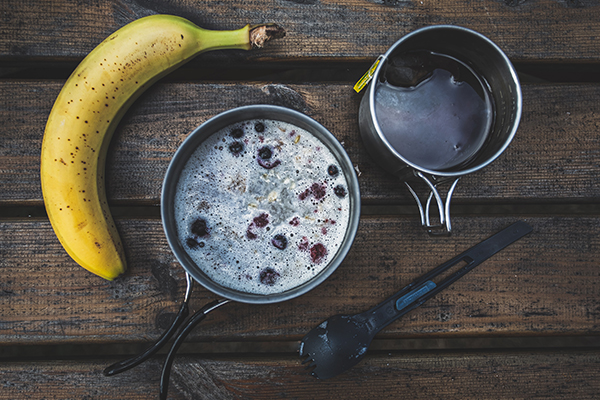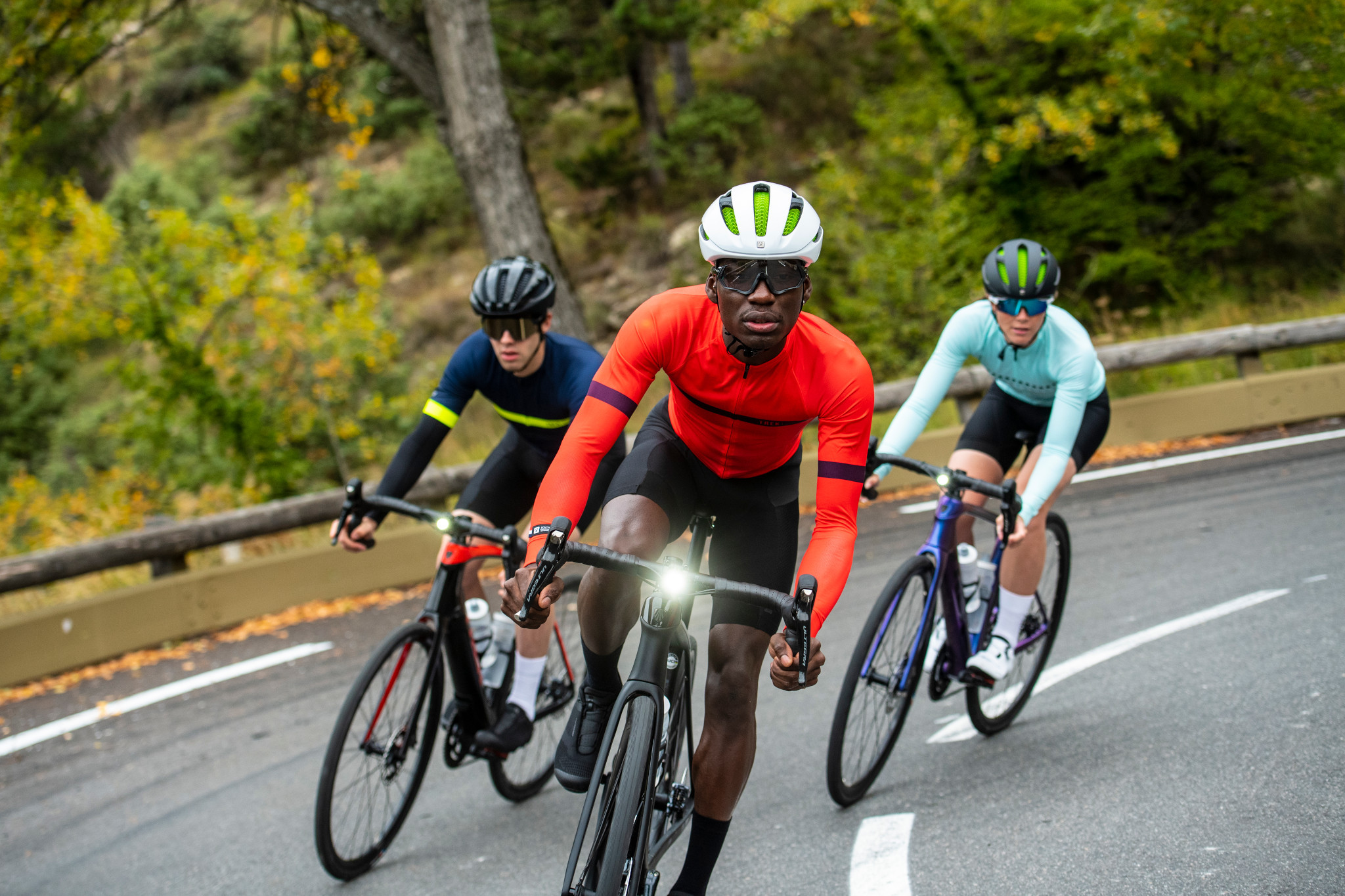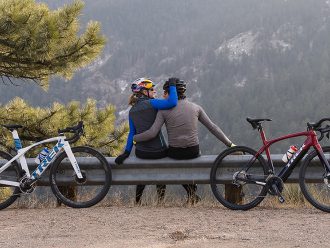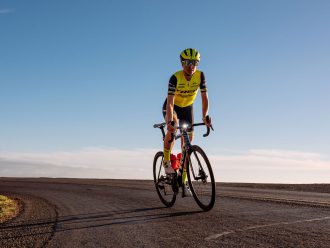What could be more adventurous and fun then heading out on your bike with everything you need to eat and sleep with you? Whether you’re planning a simple overnighter, which is a great way to start, or a multi-day trip, experienced bikepacker and endurance cyclist Helen Langridge shares her expert advice to help you have the best experience possible.
From touring around the Outer Hebrides to complete LEJOG, and from cycling around the world to prepare to take the world record for global circumnavigation (sadly interrupted due to the Covid outbreak), Helen Langridge has had plenty of experience of bikepacking and cycle touring. But it all started from commuting to work while living in London.
“Commuting kind of spurred me to sign up to a single day sportive which I really enjoyed, so when I signed up for London to Paris. I absolutely loved that sense of going from one place to another under your own steam. So then I thought ‘okay, what’s the next big thing I could do in the UK’ and it was LEJOG, which I did the following year. I met my husband after that and travelled around the world but for that, we had fully loaded bikes, like with panniers, for touring – it was crazy heavy and I thought ‘I never want to ride a bike that heavy again!”
“So from there, it was a natural progression to try bike bags, travelling fast and light but still having everything. I love that feeling when you get on a bike and you think ‘I have everything I need to survive on this bike right now. I love the independence of it, the joy of it – it’s
What to bring AKA how not to overpack
It can be very tempting to bring too much stuff. It’s easy to pack something for every eventuality, and even the most seasoned bikepackers will tell you that you have to go through the process a few times before you work out exactly what works for you – everyone brings too much stuff the first time or misses out something important.
Helen, with lots of experience behind her, is pretty brutal by her own admission.
“I start with the basics; what do I need to sleep? What do I need to be hygienic? Then I build up from there, whatever I can fit in.”
So depending on what your plans are, this means a sleeping bag, a ground mat, shelter (either a tent, bivvy, tarp or hammock), a spare pair of padded shorts and things to keep yourself clean like toothbrush, toothpaste, sunscreen and soap.
Things like your trip location, duration and time of year will impact what else you need to bring, so think about whether it’s likely to rain and how heavy, how cold it might get in the evenings, and whether you want to cook.
“On my Hebrides trip, I wasn’t originally going to bring a stove, but then I looked at the opening hours of the shops and realised I didn’t want to get stuck without anything and hungry because that makes it less fun. So I packed a small stove in my seatpack.
What clothes to bring
In addition to what you’ll be wearing to ride, Helen recommends bringing a spare pair of cycling shorts.
“I’ve got two merino tops, a lightweight gilet and a down jacket. On some trips I just wear my cycling shoes, but if I was going somewhere with rocky river crossings I might bring water shoes or sandals. If I can fit them in, I sometimes bring flipflops to wear in the evening.”
How to carry it
There are so many options when it comes to bespoke bikepacking bags that whatever bike you’re on, you’ll be able to find luggage designed to fit on handlebars, in the frame, on the top tube and even off the seat tube so you can fit your luggage in while keeping everything neat and tidy.
But you don’t have to invest loads to start with. In fact, a good old-fashioned rucksack that fits everything in will certainly do to start, though make sure you have chest and waist straps so it stays in place while you pedal. Another option is a pannier rack, a good dry bag to pop your things in, and some bungee cables or straps.
Most bikepackers will keep their sleeping stuff in a roll-bag attached to the handlebars. This way it’s all together and not mixed up with other things, which makes it quicker and easier to break out when you’re tired.
What to sleep in
Choosing your sleep system if you’re wild camping, and choosing where to sleep, are two important things to think about, though a lot of bikepackers also love the convenience of stopping at hotels, B&Bs and guesthouses when they ride – after all, there’s nothing like a hot shower and a mattress!
If you’re sleeping out under the stars, you’ll need a sleeping bag. Try to find one that will provide you with the warmth you need with as little bulk as possible as sleeping bags are often the bulkiest thing you’ll be carrying.
You may also want a ground matt which not only cushions you from the hard ground but also provides an insulating layer. There are plenty of options now that are inflatable, so they pack down to a really compact size.
Finally, shelter. This will depend a bit on what you’re comfortable with, what the weather is doing and what the temperature is.
Bivis are waterproof bags that you and your sleeping bag sleep inside, usually with your face open to the air. They’re amazing on mild nights, and there’s nothing quite like falling asleep with the stars above you, but there are a few downsides, rain being on and midges being another.
“I normally bivvy, but I’m not bivvying on my Hebrides trip because the midges are still there. Instead, I’ve got a Vango Hydrogen tent which is very lightweight and is held up with air rather than poles.” For muddy conditions, or when it’s really rainy, cold, windy or miserable, a tent is hard to beat. There are loads of new tents available today designed to be really lightweight and packable, ideal for bikepacking.
Alternatively, you could opt for a hammock, which has the advantage of keeping you away from ground-based creepy crawlies, and for bivvying and hammock sleeping many people pitch up a lightweight tarp to keep the rain off and provide a bit of shelter.
Where to sleep
“Ideally you want to be hidden, not destroying any habitat and not having to move anything out of the way to put your tent or bivvy down. Not too close to a cliff edge or anywhere that might flood overnight. If you’re on a farmer’s land, you need to ask for permission. Be sensible about leaving no trace is the key thing to remember; you don’t want to be destroying habitat just to lay your head down.”
In Scotland, the right to roam access means that – unless it’s labelled otherwise – you can camp anywhere. However, with that comes a lot of responsibility; campers should leave no trace of their presence other than a squashed patch of grass. This means you need to take out everything you bring in, including food wrappers, packets, tissues and toilet rolls. Yes, we do mean toilet roll….more on that later.
In the rest of the UK, there are obviously plenty of campsites you can rock up to, but there are also an increasing number of places that allow semi-wild camping which essentially means wild camping on land you have permission to be on, but without the facilities of a campsite, so wild camping techniques and rules apply. Nearly Wild Camping is a great place to find out about some of the locations that offer this with nearlycamping.org.
When choosing somewhere to sleep, make sure it’s not on soggy wet ground, and the ground is as level and rock-free as possible. If it’s windy, you’ll probably want to try and find a sheltered spot, and if it’s very windy, it’s best to avoid camping amongst trees in case of falling branches.
Where to go to the loo
You’re going to be out in the middle of the countryside and chances are, you won’t always have a toilet nearby – so how do you go without having a negative impact on the environment?
“Go at least 30 metres away from a water source. If you are doing a poo, dig a hole, but don’t bury the toilet paper – instead, put it in a sealed bag, take it with you, then discard it when you’re able to.”
“I think it’s something people are quite afraid of, but it’s really important because everyone goes several times a day and we need to know how to do it safely if we’re going to be out in the wild.”
Cooking and eating
Cooking systems are nice and compact, and you can either opt for a gas-powered stove (you’ll also need to carry a small gas canister) or a wood-burning stove, provided you can find fuel for it.
“I’ve got my Jet Boil, and I bring a spork, a brush to scrub things clean, a bowl and a cup that hangs off my bike bag. I bring a few snacky things like bars and peanuts that are in my accessory bag, and I’ve got a lightweight packable rucksack which I’ll put food in for the evenings when I buy it en route if there’s a big distance between places, otherwise, I would just strap it onto the seatpost.”

About the Author: Trek
Our mission: we build only products we love, provide incredible hospitality to our customers, and change the world by getting more people on bikes.

